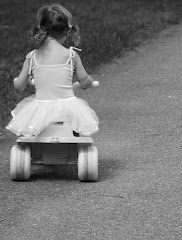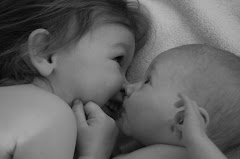I want to talk to you about the dolphins.
We kind of have a thing for dolphins, a deep awe that was sealed into place after our time at Sea World. After hearing us gush about them, two different parties told us we needed to (once we had some distance from our trip) watch the documentary called "The Cove."
Of course, we watched it that night.
It is a documentary about the Japanese dolphin hunts, wherein dolphins are inhumanely captured then picked over by trainers for dophinariums (places like Sea World). The film features Ric O'Barry, the former dolphin trainer for the show "Flipper", who had a profound experience with one of his trained dolphins and has spent the past 35 years advocating for the release of captive dolphins. His very persuasive argument is that these sentient creatures, who are self-aware enough to recognize themselves, have incredible perceptive abilities and possibly feel emotion, should never be held in a captive environment.
The truly disturbing part of the film, however, is what happens to the dolphins who were not selected. An average 23,000 dolphins are killed as a result of these hunts annually.
The main thread of O'Barry's argument is that having an industry for captive dophins creates a need for dophin hunts- basic supply and demand. So if there were no dolphinariums where people pay big money to watch the tricks and flips of these impressive animals, the dophin hunts would disappear as would the massacre of countless dolphins.
Sandi and I watched with identical expressions of shell-shocked horror, stunned into silence and frozen emotion. I was told I would need a box of tissues nearby, yet was unable to produce a single tear I was so stunned. We promptly did some research and discovered that, while Sea World obviously has captive dolphins, they no longer obtain them from these inhumane dolphin hunts. Eighty percent of their dolphins are born in captivity (I would have to argue here that while captivity is against their nature, at least they didn't go from wild to confined) and the remaining 20% are rescued. This at least made us feel slightly less sick about all the money spent and appreciation felt toward Sea World just last week.
After watching the movie, I had strange, vivid and emotionally disturbed dreams all night. The next morning, I got on the treadmill to run and something unlocked in me. Suddenly the tears were flowing like a spigot had been turned and there was no stopping them. I could not stop thinking of the suffering of these creatures whose cries of distress were not far removed from the pleas of a terrified child. I am still somewhat haunted by it.
I will admit I vacillate between wanting to put my head in the sand and wanting to become president of whatever group serves the currently persecuted. There are just so many injustices in the world, I find too much focus on them brings me so much pain and leaves me feeling so disempowered. I can tell you that this film (which, did I mention, won an OSCAR?) has mobilized thousands of people into action which will hopefully have some positive impact on the atrocities happening in the Japanese waters.
We both questioned if we regretted that we had gone to Sea World in light of this newfound knowledge. Now that we know that captive dolphins often have to be given Maalox for ulcers caused by stress- the stress these acoustically oriented animals have when they are performing in noisy stadiums before clapping and yelling fans- and that they often suffer from depression. Ultimately the answer was no. We simply were ignorant to the circumstances.
The more difficult question, though, is would we go back? Would we once again pay money that supports this captivity? We both agreed that we simply don't know. There is an enormous amount of educational benefit to having people interact with these animals- any captive animals really. Yes, selfishly, it was deeply gratifying for our family to touch and play with the dolphins. But beyond that, imagine all the people who don't give a damn about the environment who may have an experience at a place such as Sea World and suddenly care about a species of animal and the threat on their habitat, whether ocean or savannah or rain forest. Perhaps it is this closer contact that makes someone start to recycle, stop littering, make more environmentally conscious choices in their lifestyle and spending. Should the dolphins be held captive, unable to swim their typical 40 miles a day, so that humans can smarten up? No they shouldn't. But, honestly, their future may depend on a few to be held in order to represent for the remainder of them.
I hope you will watch the film. Not to be depressed, but to be moved...moved into an even greater wanting for this world to be a place where goodness and justice and respect abound.
http://www.thecovemovie.com/
(We watched it live streaming from Netflix which was free since we are members.)
Wednesday, February 2, 2011
Subscribe to:
Post Comments (Atom)








1 comment:
It is a difficult decision... whether to go back or not, that is. If I had been with you, I'm sure I would have gone, but my experience would not have been sheer joy. It would have been a mixture of emotions... such is the case when illusions are exposed by greater Truths. It would be very difficult to walk through the park knowing that 99% of the people there are ignorant of the Consciousness that dolphins (all animals) possess.
I think a parallel thread is Ric's need to make amends for an atrocity/industry that he feels largely responsible for creating. He knows the dolphin-eating industry is out of his hands... stopping parks won't stop the dolphin hunt, now it's about $$$... but he hopes to stop the industry through education about dolphins. He has a powerful testimony that will cause people to care.
I only say this because I think it's a truly wonderful story about accountability. At the time, he was doing something he felt passionate about. Turns out that may have caused a lot of harm. He hasn't walked away. He's doing something. I think that's a great story.
Post a Comment